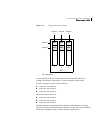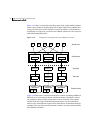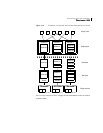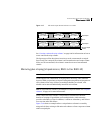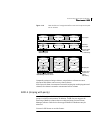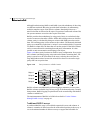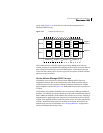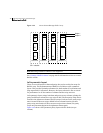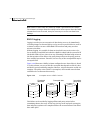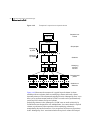
47Understanding Veritas Volume Manager
Volume layouts in VxVM
parity stripe. Figure 1-21 shows the row and column arrangement of a
traditional RAID-5 array.
Figure 1-21 Traditional RAID-5 array
This traditional array structure supports growth by adding more rows per
column. Striping is accomplished by applying the first stripe across the disks in
Row 0, then the second stripe across the disks in Row 1, then the third stripe
across the Row 0 disks, and so on. This type of array requires all disks columns,
and rows to be of equal size.
Veritas Volume Manager RAID-5 arrays
The RAID-5 array structure in Veritas Volume Manager differs from the
traditional structure. Due to the virtual nature of its disks and other objects,
VxVM does not use rows. Instead, VxVM uses columns consisting of variable
length subdisks as shown in Figure 1-22. Each subdisk represents a specific area
of a disk.
VxVM allows each column of a RAID-5 plex to consist of a different number of
subdisks. The subdisks in a given column can be derived from different physical
disks. Additional subdisks can be added to the columns as necessary. Striping is
implemented by applying the first stripe across each subdisk at the top of each
column, then applying another stripe below that, and so on for the length of the
columns. Equal-sized stripe units are used for each column. For RAID-5, the
default stripe unit size is 16 kilobytes. See “Striping (RAID-0)” on page 38 for
further information about stripe units.
Column 0 Column 1 Column 2 Column 3
Row 0
Row 1
Stripe 3
Stripe 2
Stripe 1



